Javan Mynah (Acridotheres javanicus)
The Javan Mynah is the most common mynah in Singapore. It has displaced the local brown Common Mynah (Acridotheres tristis) which is infrequently sighted nowadays.
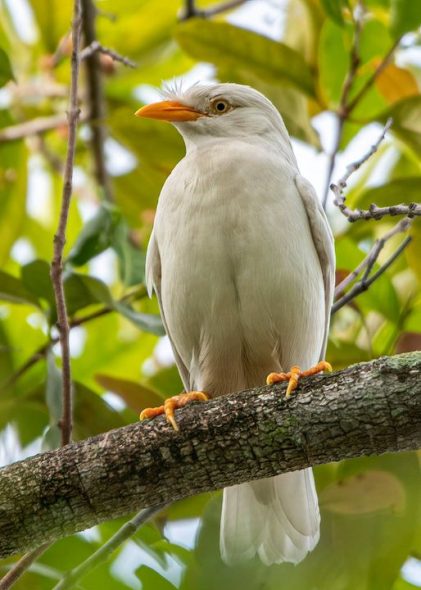
Albinism
Albinism is a congenital disorder characterized in humans by the complete or partial absence of melanin pigments in the skin, hairs and eyes. This is due to the absence or defect in Tyrosinase, a copper containing enzyme, involved in the production of melanin pigments. Albinism results from inheritance of recessive gene alleles and is known to affect all vertebrates.
Leucism is an abnormal condition of reduced pigmentation affecting various animals (such as birds, mammals, and reptiles) that is marked by overall pale color or patches of reduced coloring and is caused by a genetic mutation which inhibits melanin and other pigments from being deposited in feathers, hair, or skin.
Hence the difference is in the eyes:
White bird with pink eyes = Albino
White bird with black eyes = Leucistic
But a leucistic bird with blackish/blue/yellow colored eyes may still be an albino.
There are two principal types of albinism: oculocutaneous affecting the eyes, skin and hair, and ocular, affecting the eyes only.
Oculocutaneous albinism (OCA) is caused by mutations in several genes that control the synthesis of melanin within the melanocytes. Seven sub-types (type 1 to 7) of oculocutaneous albinism have been described. Oculocutaneous albinism is also found in non-human animals.
Type I oculocutaneous albinism (OCA1a) (a complete absence of melanin) is the form most commonly recognized as ‘albino’ as this results in the completely white skin, hair/fur/feathers, and pink pupils. However, this has led many to assume that all albinos are pure white with pink pupils, which is not the case.
OCA type 2, the most common type of albinism is caused by mutation of the P gene. Read more about P gene mutations in humans. They generally have more pigment and better vision than those with OCA1, but cannot tan like some with OCA1b. A little pigment can develop in freckles or moles. People with OCA2 usually have fair skin, but are often not as pale as OCA1. They have pale blonde to golden, strawberry blonde, or even brown hair, and most commonly blue eyes. Affected people of African descent usually have a different phenotype (appearance): yellow hair, pale skin, and blue, gray or hazel eyes.
According to the National Organization for Albinism and Hypopigmentation, “With ocular albinism, the color of the iris of the eye may vary from blue to green or even brown, and sometimes darkens with age. Read more about partial pigmentation in unusual plumage colour.
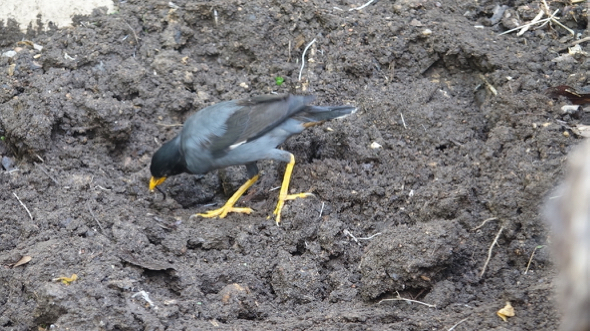
The Gray Horse ( looks leucistic but not leucistic)
A Gray horse looks completely white with black eyes and nuzzle.
A gray horse (or grey horse) has a coat color characterized by progressive depigmentation of the colored hairs of the coat. Most gray horses have life-long black skin and dark eyes. The gray gene does not affect skin or eye color. A gray foal may be born any color. However, bay, chestnut, or black base colors are most often seen. As the horse matures, it “grays out” as white hairs begin to replace the base or birth color. Graying can occur at different rates—very quickly on one horse and very slowly on another. As adults, most gray horses eventually become completely pure white.
Hence, by pure observation, an adult Gray horse with a full coat of pure white fur and black eyes should be qualified to be called a Leucistic horse. But it doesn’t because it has black skin (although fully hidden) and it has no problem with producing ample amount of melanin for its skin.
Biological pigments
Birds also have other biological pigments besides melanin, like pterins (yellow), carotenoids (food-derived pigments) (yellow, orange, red), psittacofulvins (in parrots) (yellow, red), vitamin A and porphyrins. These create color by absorbing light of certain wavelength and reflecting others.
Structural color pigments
Birds also have structural colors. These colors are produced by 2 types of colorless pigments.
Type 1: crystalline purine granules in leucophores (white color)
Type 2: parallel sheets of guanine crystals in Iridophores (iridescence color).
Thus even a truly albino bird may not be completely white.
In conclusion, when you use the term Albino or Leucistic, it is a minefield out there. Maybe it is better to use the simple term “White” bird.
As a footnote, what we humans see as a white bird may not be white to other birds.
Birds have tetra chromatic vision, which means that they have four types of cone cells (humans have only three types) in their retinas. In addition they have transparent oil droplet filters in front of their cone cells which further refine their spectral sensitivities. This may allow birds to see in the UV and infrared range.
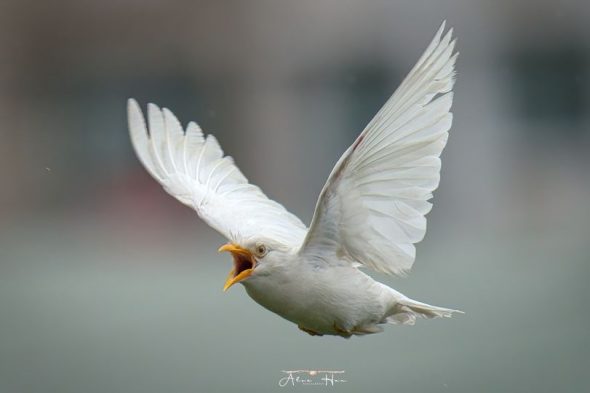
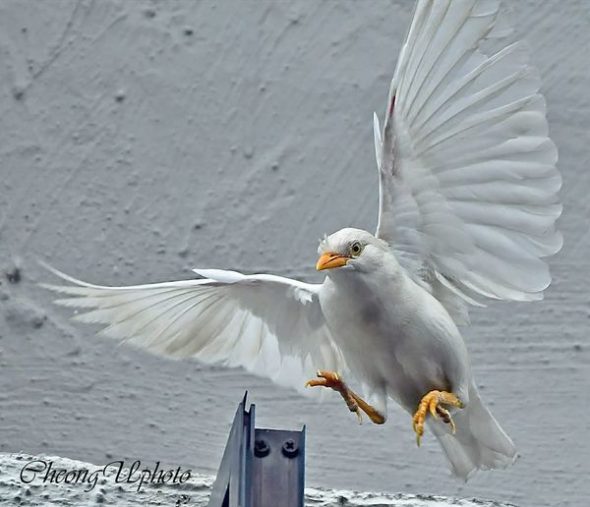
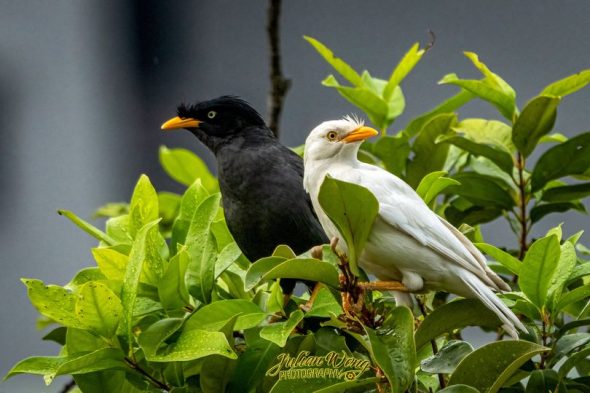
You can watch the video below by Jeremiah Loei (BICA) about a partially leucistic Javan Mynah .
Additional photos of leucism in crows and kingfishers can be found in these articles: leucism in crows , tale of an albino crow and albino kingfisher chick.
Article by K~LW
This post is a cooperative effort between Birds, Insects N Creatures Of Asia and BESG to bring the study of birds and their behaviour through photography and videography to a wider audience.
Featured image of Leucistic Javan Mynah was taken in Bukit Batok street 21 on 20 August 2021 by Desmond Yap.








